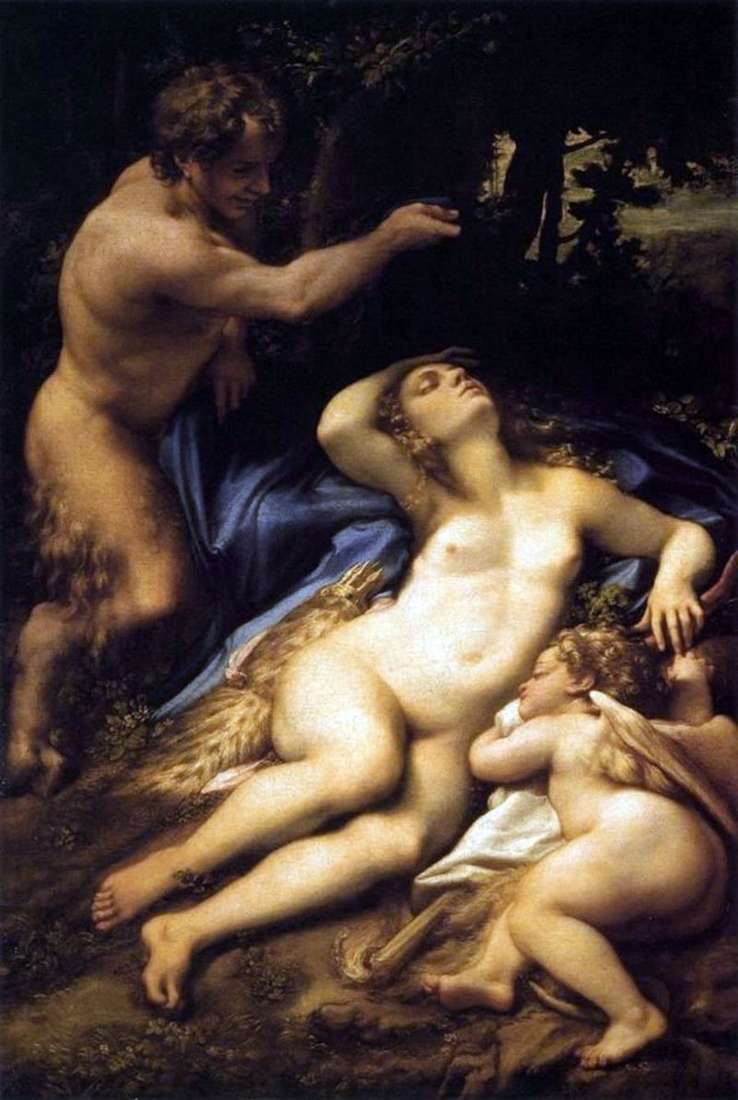
Ordered by Federico Gonzaga, this work anticipates a series of “Love of the Gods” and is a steamer to the painting “Cupid School.” Previously it was believed that it was not Venus, but Antioopa. The researchers were bewildered by the figure of the satyr. There is a myth that tells how Jupiter, in order to get closer to the nymph Antioop, turned into a satire. Thus, it was believed that this picture also refers to the cycle “Love of the Gods”.
However, now art historians say that the picture is not directly related to the cycle mentioned and does not illustrate any particular myth, but Venus and Cupid are depicted here. The canvas, therefore, is not so much mythological as frankly erotic.
In the XVI century, in the aristocratic environment, such paintings became very popular. After the “gloomy” Middle Ages, the craving for life and its pleasures broke out with renewed vigor, and the pleasure required to be clothed in an elegant and decent form. Ancient mythology represented painters many plausible pretexts for the depiction of nude nature. As for this picture, here the sensual charm of the twists of the body of Venus is underlined and successfully chosen background – a dark forest landscape, against which the skin of the goddess appears glowing.
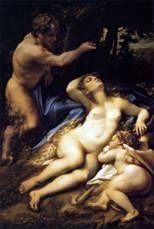 Vénus et Cupidon Satyr Peeps – Correggio (Antonio Allegri)
Vénus et Cupidon Satyr Peeps – Correggio (Antonio Allegri)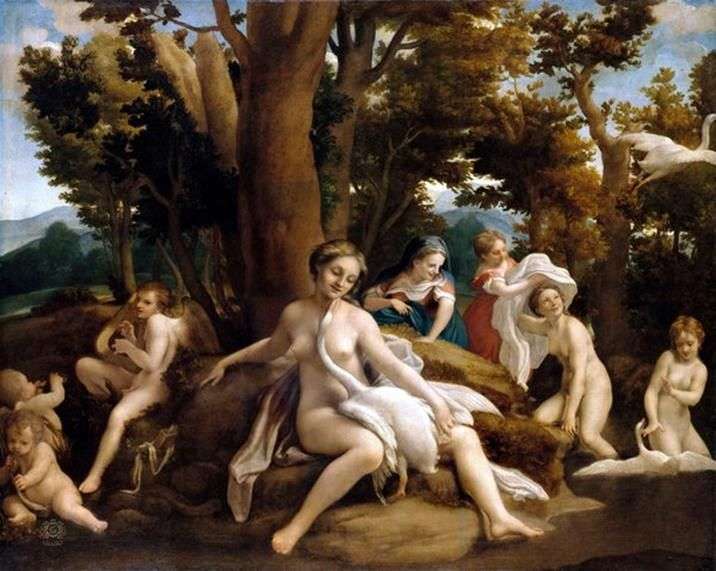 Leda by Correggio (Antonio Allegri)
Leda by Correggio (Antonio Allegri) Venus and Cupid by Alessandro Allori
Venus and Cupid by Alessandro Allori Learning Cupid by Francois Boucher
Learning Cupid by Francois Boucher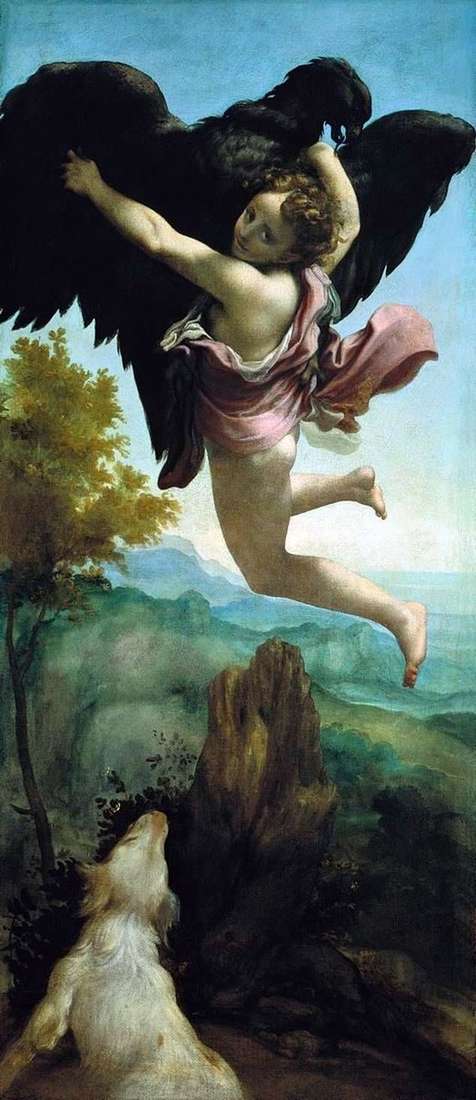 The abduction of Ganymede by Correggio (Antonio Allegri)
The abduction of Ganymede by Correggio (Antonio Allegri) Venus and Mars connected by Cupid by Paolo Veronese
Venus and Mars connected by Cupid by Paolo Veronese Venus and Cupid by Giovanni Antonio Pellegrini
Venus and Cupid by Giovanni Antonio Pellegrini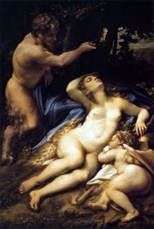 Venus y Cupido, detrás de los cuales mira el sátiro – Correggio (Antonio Allegri)
Venus y Cupido, detrás de los cuales mira el sátiro – Correggio (Antonio Allegri)